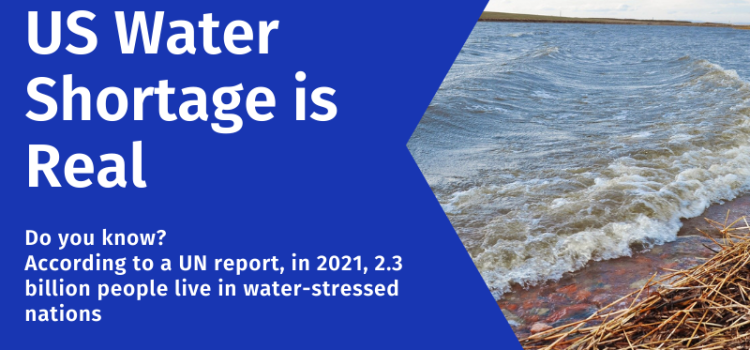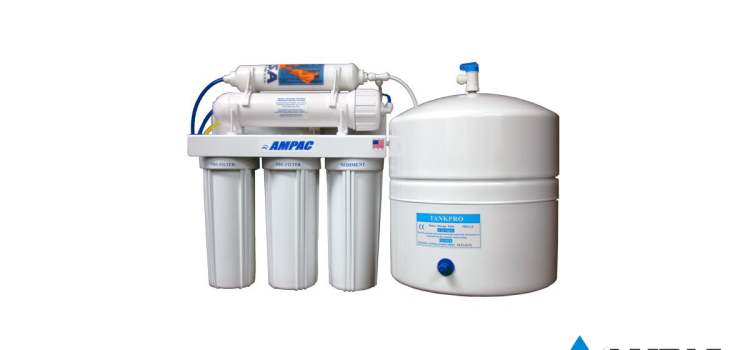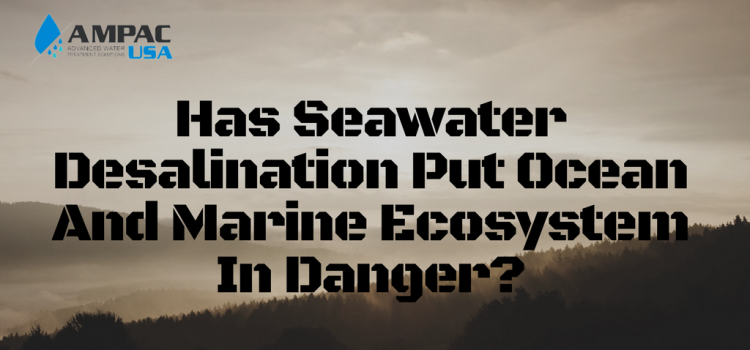According to a UN report, in 2021, 2.3 billion people live in water-stressed nations. About 733 million live in critically water-stressed countries. Many people have a misconception that the water shortage occurs in only third-world countries. Well, that’s a myth. Water shortage can and does happen in developed nations like the US as well. It was recently brought to attention again when the authorities highlighted water shortage. Believe it or not, in a first, the US authorities have declared an official water shortage for the Lake Mead Reservoir this Monday. It will lead to water supply cuts to Southwest (that’s already drought-stricken). About ten Western governments have called for federal drought aid. To know more about this water crisis and a potential solution, read on.
How Water Distribution Will Be Impacted?
The official water shortage will ensure a reduction in the water supply to Nevada, Mexico, and Arizona. It will begin for the year that will begin in October 2021. It was shared by an agency of the Interior Department, the US Bureau of Reclamation.
The annual water distribution to Arizona will likely be reduced by 18 percent, while the same to Nevada would be reduced by 7 percent. Even water distribution to Mexico would be reduced by 5 percent. The allocations to Mexico are mandatory as per a treaty signed in 1944.
The Letter from the Governors
Ten Western governors have urged the president of the US, Joe Biden, to declare a federal drought disaster in their respective states. If that happens, it will allow ranchers and farmers to seek special assistance that is beyond what is available as a part of emergency programs. In the letter, the governors wrote this- “Historic drought levels threaten to wipe out entire crops, reduce yields and harbor extreme levels of pests and diseases that add to cumulative losses.”
In the letter, the governors also mentioned that the drought has drastically reduced feed supplies in the US West. The hay prices are pushed up as several farmers and herders are auctioning livestock and are also forced to think of selling their land for development.
The Real Meaning
People who want to know the real impact of water shortage in the US must know that the reservoir supply cuts mean that there would be less water for towns, native American tribes, and even for agriculture.
Due to these cuts, about 40 million people who rely on the river for water will be impacted. The first round of cuts will mostly impact the Arizona farmers, and it will begin in January. Nevada will also need to cut down on water use from the beginning of the next year. State officials have stated that they have already reduced the water deliveries. More cuts might be needed if the level of Lake Mead continues to decline.
Impact of Climate Change
Blaming climate change, Interior Department Assistant Secretary for water and science, Tanya Trujillo, said, “We are seeing the effects of climate change.” She also highlighted that high temperatures, dry ground conditions, and below-average snowpack were part of the problem. She added, “Unfortunately, this trend could continue,”
Lake Mead
Former in the 1930s, Lake Mead, is the largest reservoir in the US. It was formed from the Colorado River Dam on the Arizona- Nevada border. It has proven vital for the water supply of about 25 million people who live in Las Vegas, Los Angeles, San Diego, Tucson, and Phoenix.
According to Interior Department, the drought in US West has brought both Lake Mead and Lake Powell, which is the second-largest reservoir in the country, to historic lows. The total water storage present in the Colorado River system is now 40 percent of capacity. It was 49 percent just a year back.
An annual study that anticipates water levels of reservoirs in winter that was conducted in January 2021 mentioned that Lake Mead might be 324.9 meters above sea level. It is about 2.7 meters lower than the official trigger for the shortage of water. The lake is now at the lowest level since its formation in the 1930s. If adequate measures are not taken, it might be at 34 percent capacity soon.
Officials have also stated that the elevation of the water reservoir will likely continue to decline. States like California, Nevada, and Arizona are considering options that will help prevent the reservoir from going below 310.9 meters.
Additional Actions
Bureau of Reclamation Deputy Commissioner Camille Touton said in a news conference on Monday the decision to enact water cuts was not taken lightly. She said that “additional actions will likely be necessary in the very near future.”
The Growing Drought
Most of the US West is experiencing a multi-year drought that has created history. A report by the UN released a few days back warned that droughts are growing worldwide with more intensity and frequency as the planet is warming. Earlier, droughts typically occurred about every ten years, but now, they occur with 70 percent more frequency.
Though climate change is a big factor, all droughts are not due to it. Sometimes, they occur as the excess heat in the atmosphere draws more moisture out of the earth. Hence, the droughts are worse than ever!
It is also a sad reality that the world has warmed around 1.2C since the beginning of the industrial era. It’s time for governments and people to cut emissions down to reverse the damage over the next few decades/centuries.
A Possible Solution to US West Water Cuts – AMPAC USA’s Mobile and Solar Water Treatment Systems
If you face water cuts in your area and want to access more and pure water, you should consider mobile and solar water treatments offered by AMPAC USA. We manufacture Advanced Mobile Water Treatment, Water Purification, and Seawater Desalination systems that can be relocated on their mobile platforms, such as enclosed truck trailers for vehicular towing, even to remote locations with no access to the electrical grid through optional solar- or fuel-driven power generators. Mobile and solar water treatment plants are the much-required resources during disasters and emergencies like droughts.
Mobile and Solar Water Treatment equipment are the most convenient solution to these problems. These pieces of equipment are designed to meet emergencies effectively. A fixed source of energy is, or a huge power supply is not required to operate this equipment. These can be operated anywhere, and usually, a mobile van fitted in with the water treatment plant is used for this purpose. These mobile water purifiers work on solar energy, or fuel has driven power generators. These mobile and solar water treatment plants are equally efficient in producing safe and pure drinkable water as any power-operated water purifier does.
AMPAC USA Mobile Water Treatment Systems are recognized globally by some of the most discerning end-users for their rugged durability, reliability, and mobility. A parallel military product line called ROWPU (reverse osmosis water purification unit) is approved by NATO, the North Atlantic Treaty Organization military alliance between the United States and several European partner countries.
AMPAC USA recommends using portable water purification systems, solar power water systems, mobile water treatment systems, and mobile water provisioning systems in drought-like conditions. For more details on which system is the right one for your specific needs and how we can customize our reverse osmosis and seawater desalination systems for your needs, you can fill our contact form or give us a call on 909-548-4900.
References
https://www.entornointeligente.com/17/08/2021/us-west-declares-first-water-shortage-triggering-planned-cuts/
https://news.yahoo.com/first-ever-water-cuts-ordered-155436242.html
https://www.unwater.org/water-facts/scarcity/
Mobile Solar Water Treatment – AMPAC USA (ampac1.com)










